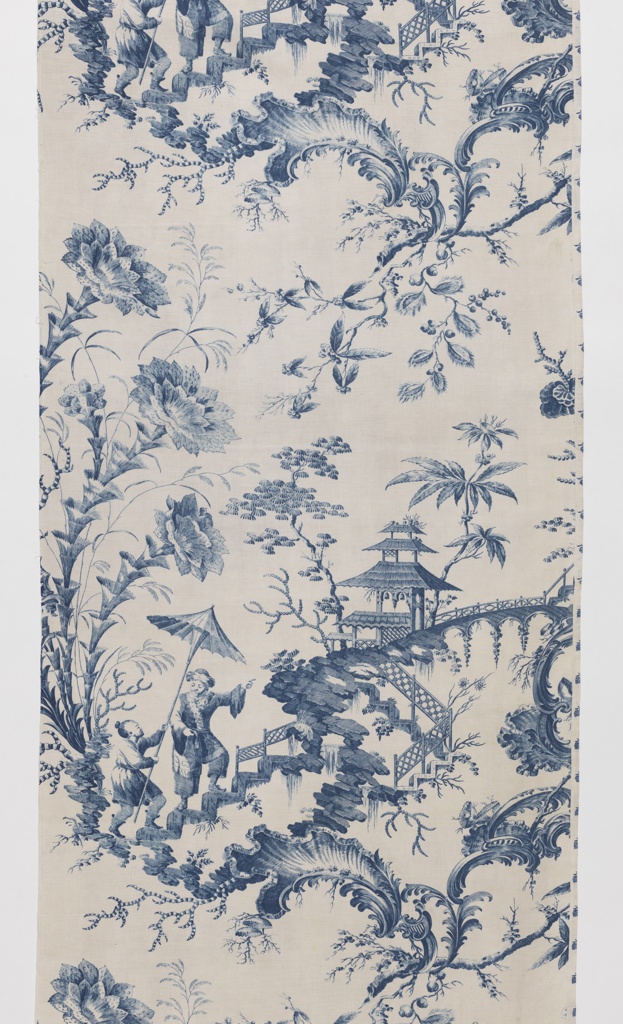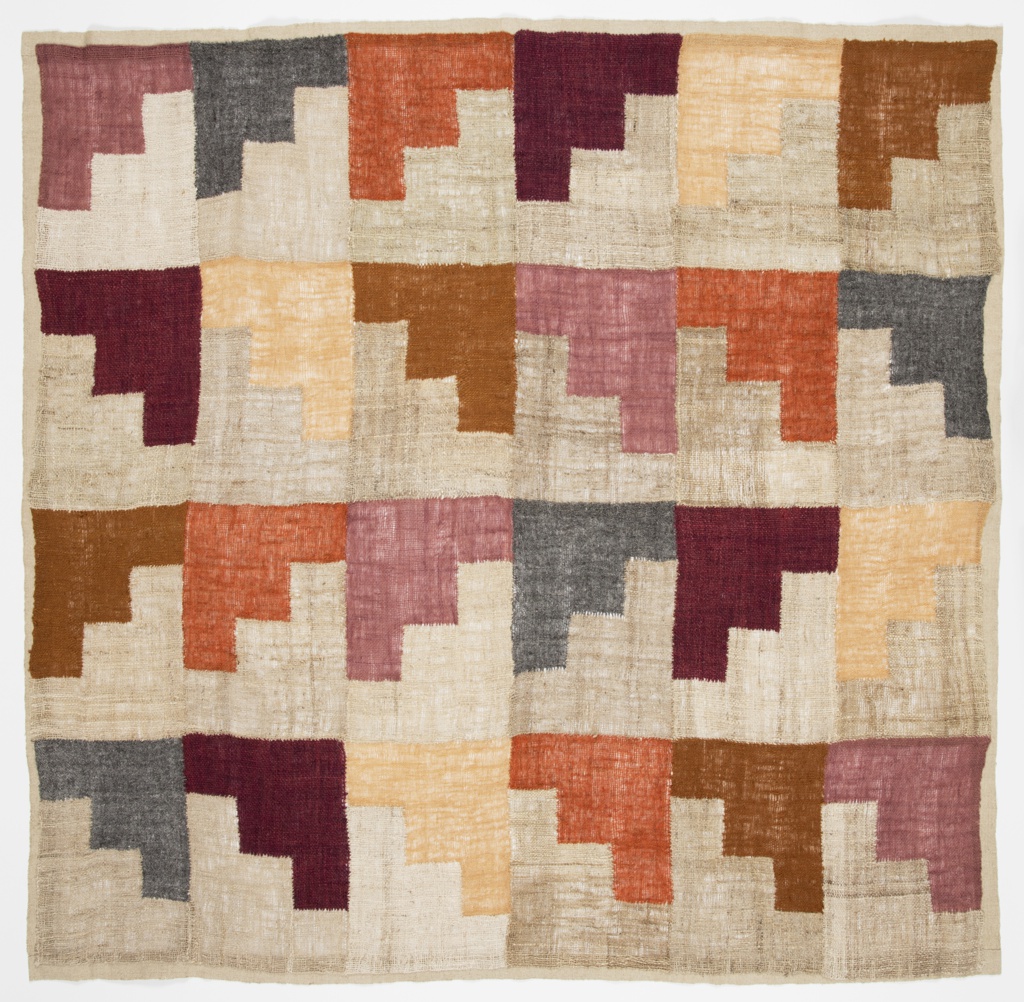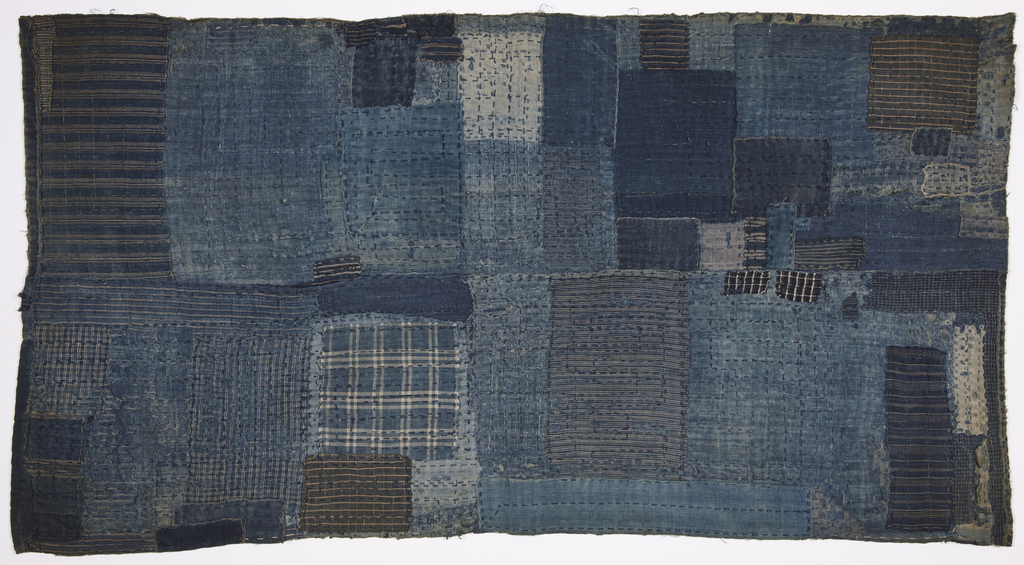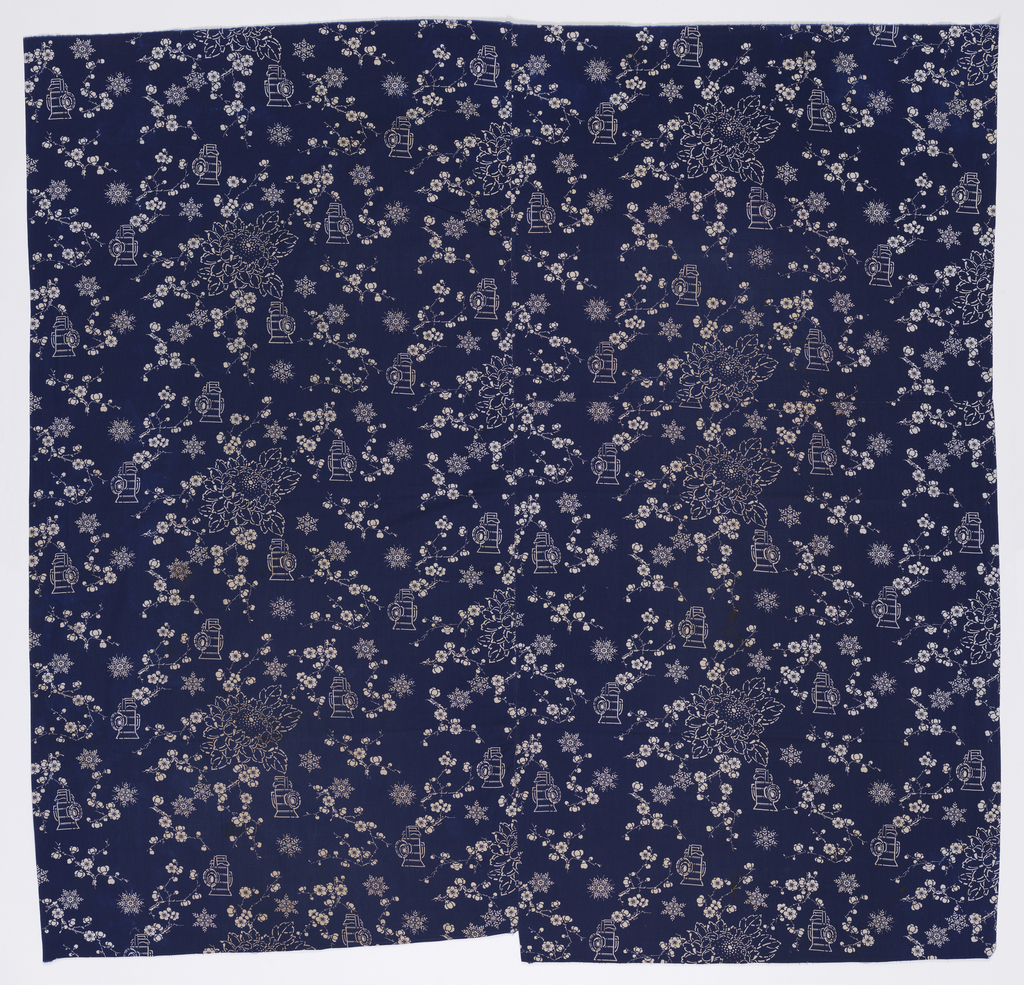This textile’s whimsical chinoiserie scene was inspired by the work of French artist Jean-Baptiste Pillement (1728 – 1808), and printed by Bromley Hall, a prominent textile printing manufactory in Middlesex, England. Pillement’s illustrations inspired many late-eighteenth-century textile designs. Although this design features many of the artist’s signature motifs – oversized flowers, a winding staircase and...
Paired sets of stepped blocks in harmony and balance echo an ancient process. James Bassler (American, b. 1933), in his work Six by Four II, incorporates an aesthetic of pure color through the interlacing of warps and wefts in a special way. By changing the colors of each block, linked one to the other, thread...
Today, indigo-dyed cotton cloth and clothing are emblematic of Japanese folk traditions. But cotton is not indigenous to Japan, and for most of Japan’s history, rural clothing was made from available plant fibers: paper mulberry, ramie, nettle, hemp, and wisteria. Cotton, which was originally introduced through Korea and China, was first cultivated in the warmer,...
This cotton quilt cover is based on The Legend of the Red Lantern, one of the Eight Model plays promoted during the Cultural Revolution in China, as they promoted the ideals of communism. (By the end of the Cultural Revolution, there were 18 approved plays and ballets.) The plot of The Legend of the Red...
The evening of May 19th capped off a three-day residency at the Cooper-Hewitt for Natalie Chanin, founder and designer of the design studio Alabama Chanin. Chanin, one of the founders of the burgeoning “slow fashion” movement, followed up her two-day Design Directions workshop for teenagers with an hour-long public lecture and book signing. “Lecture”...




